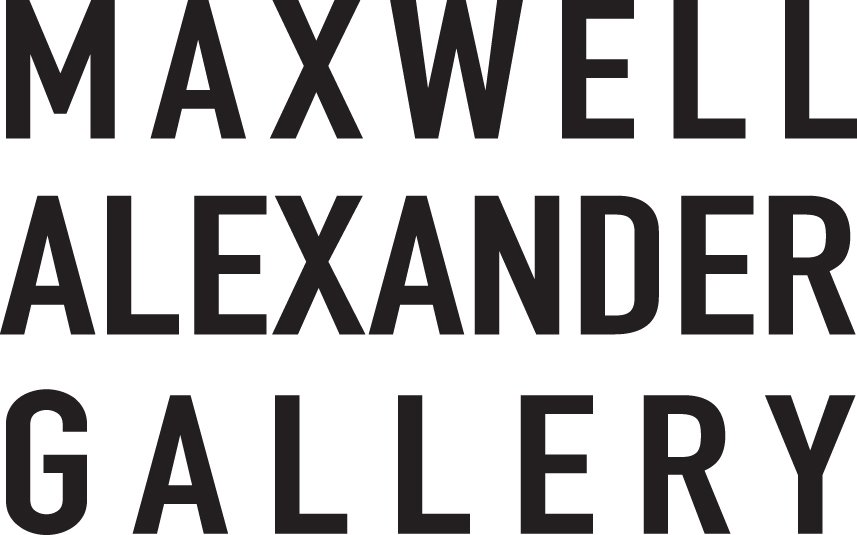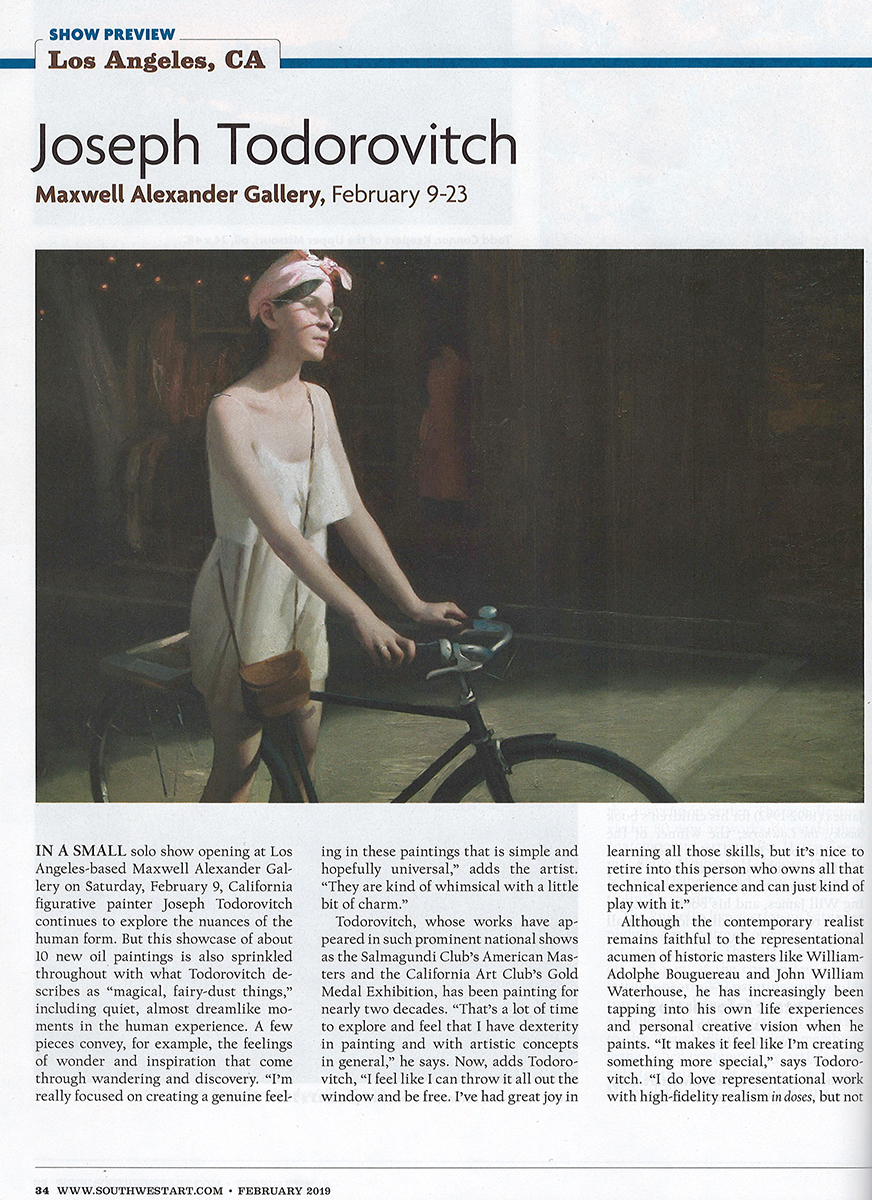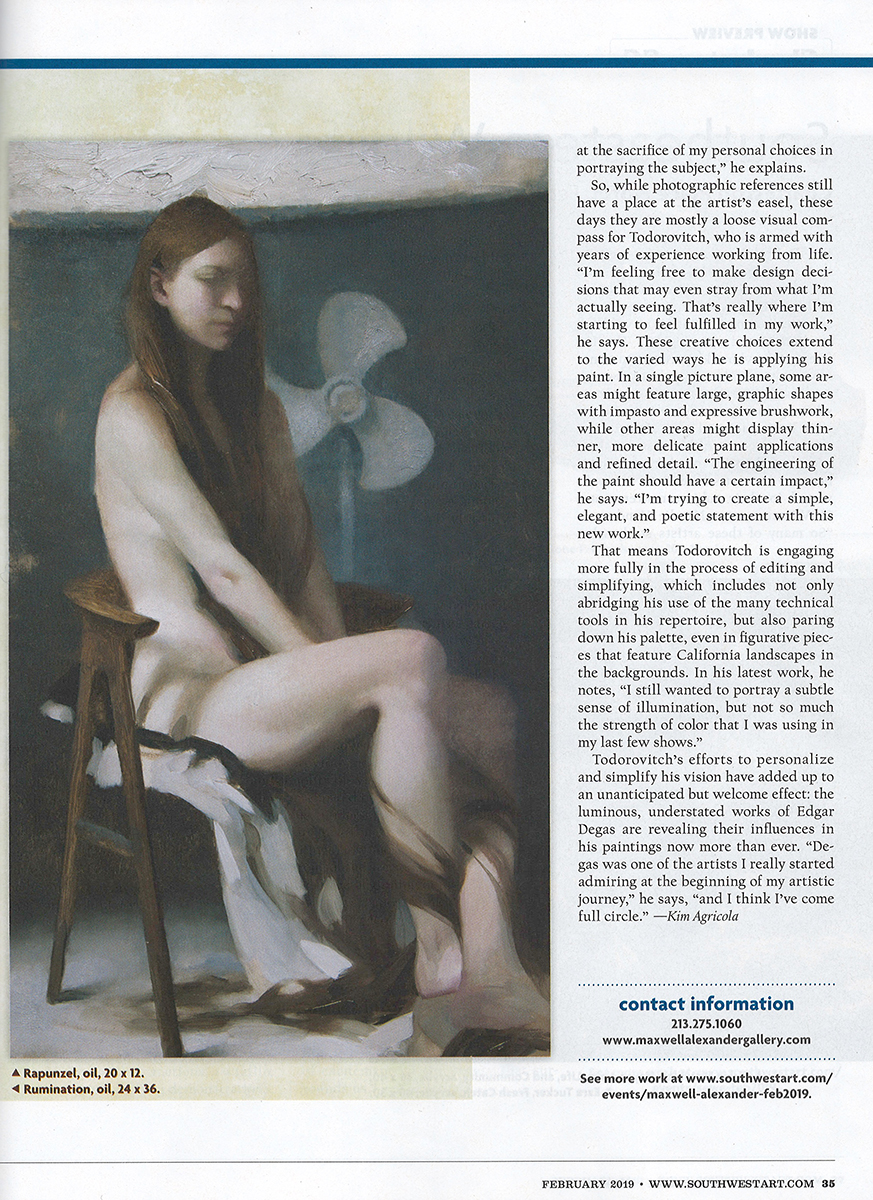In a small solo show opening at Los Angeles-based Maxwell Alexander Gallery on Saturday, February 9, California figurative painter Joseph Todorovitch continues to explore the nuances of the human form. But this showcase of about 10 new oil paintings is also sprinkled throughout with what Todorovitch describes as “magical, fairy-dust things,” including quiet, almost dreamlike moments in the human experience. A few pieces convey, for example, the feelings of wonder and inspiration that come through wandering and discovery. “I’m really focused on creating a genuine feeling in these paintings that is simple and hopefully universal,” adds the artist. “They are kind of whimsical with a little bit of charm.”
Todorovitch, whose works have appeared in such prominent national shows as the Salmagundi Club’s American Masters and the California Art Club’s Gold Medal Exhibition, has been painting for nearly two decades. “That’s a lot of time to explore and feel that I have dexterity in painting and with artistic concepts in general,” he says. Now, adds Todorovitch, “I feel like I can throw it all out the window and be free. I’ve had great joy in learning all those skills, but it’s nice to retire into this person who owns all the technical experience and can just kind of play with it.”
Although the contemporary realism remains faithful to the representational acumen of historic masters like William-Adolphe Bouguereau and John William Waterhouse, he has increasingly been tapping into his own life experiences and personal creative vision when he paints. “It makes it feel like I’m creating something more special,” says Todorovitch. “I do love representational work with high-fidelity realism in doses, but not at the sacrifice of my personal choices in portraying the subject,” he explains.
So, while photographic references still have a place at the artist’s easel, these days they are mostly a loose visual compass for Todorovitch, who is armed with years of experience working from life. “I’m feeling free to make design decisions that may even stray from what I’m actually seeing. That’s really where I’m starting to feel fulfilled in my work,” he says. These creative choices extend to the varied ways he is applying his paint. In a single picture plane, some areas might feature large, graphic shapes with impasto and expressive brushwork, while other areas might display thinner, more delicate paint applications and refined detail. “The engineering of the paint should have a certain impact,” he says. “I’m trying to create a simple, elegant and poetic statement with this new work.”
That means Todorovitch is engaging more fully in the process of editing and simplifying, which includes not only abridging his use of the many technical tools in his repertoire, but also paring down his palette, even in figurative pieces that feature California landscapes in the backgrounds. In his latest work, he notes, “I still wanted to portray a subtle sense of illumination, but not so much the strength of color that I was using in my last few shows.”
Todorovitch’s efforts to personalize and simplify his vision have added up to an unanticipated but welcome effect: the luminous, understated works of Edgar Degas are revealing their influences in his paintings now more than ever. “Degas was one of the artists I really started admiring at the beginning of my artistic journey,” he says, “and I think I’ve come full circle.” — Kim Agricola


